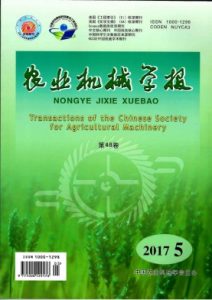 YANG – Interpolation of Groundwater Depth based on Data Assimilation
YANG – Interpolation of Groundwater Depth based on Data Assimilation
MA Huan, YUE Depeng, YANG Di, YU Qiang, ZHANG Qibin, HUANG Yuan
Article first published online: 27 APR 2017 Transactions of the Chinese Society of Agricultural Machinery (in English)
DOI: 10.6041/j.issn.1000-1298.2017.04.027
ABSTRACT: Groundwater monitoring is limited by practical conditions, and only limited monitoring results can be obtained when it is observed. As a kind of geostatistical interpolation method, cooperative Kriging (co-Kriging) method can effectively represent the transformation of discrete point-like information to planar continuous information. Dengkou County, a typical county in the arid region of Northwest China, was selected as the study area. The sampled data from 40 groundwater sampling sites in 2015 was selected as the main variable. And this data optimized by EnKF was used as the basic data of co-Kriging interpolation. The evapotranspiration results and NDVI data were selected as the covariates. Co-Kriging interpolation was carried out by using the sampled data from 40 groundwater sampling sites in August, 2015, as the main variable, which were optimized by EnKF, and the evapotranspiration results and NDVI data were used as the covariates. Meanwhile, the results of co Kriging interpolation without using EnKF model and Kriging interpolation optimized by EnKF model were used to verify the accuracy. The results showed that the spatial distribution trend of groundwater depth was basically the same at large scale, the value in the southern desert region was higher, and the spatial distribution showed obvious geography regularity. The most significant improvement was achieved with EnKF model. Based on this improvement, the mean error, root mean square error and mean standard error were all better than those without assimilation, with the mean error of 0.2705m. Compared with the ordinary Kriging interpolation method, co-Kriging model took the synergistic effect of evapotranspiration and NDVI into consideration, and the precision was obviously improved. The mean error was decreased by 0.4097m, the root mean square error was decreased by 0.0784m and the mean standard error was decreased by 1.0167m. This study can provide a scientific basis for spatial visualization simulation and reasonable management of water resources in arid areas.
Read the full publication at Transactions of the Chinese Society of Agricultural Machinery